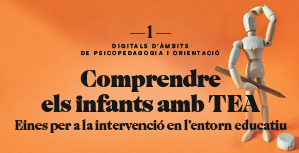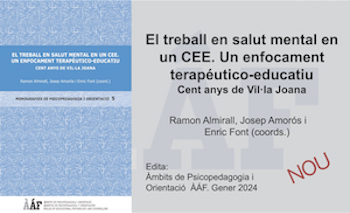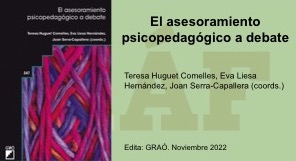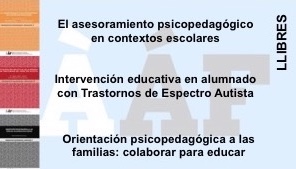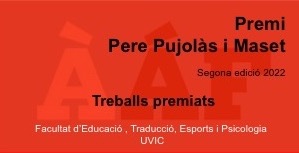Detection of risk factors in the school environment: pilot study
Keywords:
Early detection, Prevention, Risk factors, School, Emotional maturityAbstract
Introduction: The school is a natural environment where we can detect the early factors of risk in infant development. Preventive work is essential in order to implement resources as soon as possible. Main objective: To detect the risk factors of students aged 3 to 11 years old at a school. EPPO Methodology: Psycho pedagogical studies have been carried out on Preschool, First and Sixth grade elementary children and in this case the LISMEN instrument has been used. The sample was formed by 50 children and their parents responded to a total of 32 LISMEN questionnaires. Results: The presence of adverse events in the first years of life can affect the development of the child. An early detection can help prevent learning disorders and difficulties of emotional maturation as well as in the development of attachment. Early detection can be performed adequately with the EPPO methodology compared to the LISMEN method. It has been shown that the EPPO methodology is more sensitive to the identification of the population at risk in this educational setting than the LISMEN method.
References
ARTIGUE, J.; TIZÓN, J.; SALAMERO, M. (2016). Reliability and Validity of the List of Mental Health Items (LISMEN). Schizophrenia Research, 176 (pàg. 423-430).
BOSCH, L. (1987). Avaluació del desenvolupament fonològic en nens catalanoparlants de 3 a 7 anys. Barcelona: Publicacions ICE.
COSCOLLA, R; MARTÍNEZ, S.; POLL, M. (2016). Atenció a la salut mental infantil i adolescent a Catalunya. Barcelona: Fundació Pere Tarrés i Federació Salut Mental Catalunya. (pàg. 9).
DE LA CRUZ, M.; MAZAIRA, M.C. (1998). Escala de evaluación de la psicomotricidad en preescolares: manual. Madrid: TEA. Publicaciones de Psicología Aplicada. Serie menor 186.
FERNÁNDEZ-MATAMOROS, I.; FUENTES, J.; RUEDA, J. (1991). Escala Haizea-Llevant. Vitòria: Departamento de Publicaciones del Gobierno Vasco.
GOLDSTEIN, J.; BUKA, S.; SEIDMAN, L.; TSUANG, M. (2010). Specificity of familial transmission of schizophrenia psychosis spectrum and affective psychoses in the New England family study's high-risk design. Archives Generals of Psychiatry, 67 (5) (pàg. 458-467).
GOODENOUGH, F. (1926). Measurement of intelligence by drawings. New York: Hardcourt, Brace and world.
HANS, S.; AUERBACH, J.; STYR, B.; MARCUS, J. (2004). Offspring of parents with schizophrenia: mental disorders during childhood and adolescence. Schizophrenia Bulletin, 30(2), (pàg. 303-315).
LAPLACE, V. (2004). El dibujo de la familia: su valor clínico desde un enfoque psicoanalítico. Buenos Aires: Universidad John F. Kennedy.
MACHOVER, K. (1949). Personality Projection in the Drawing of Human Figure. Springfield III: Charles C. Thomas.
PRATS, B.; PRATS, R.; PLASÈNCIA, A.; (coord.) (2008). Protocol d’activitats preventives i de promoció de la salut a l’edat pediàtrica. Direcció general de Salut Pública, Departament de Salut, Generalitat de Catalunya.
WORLD HEALTH ORGANIZATION (WHO) (2005). European Ministerial Conference on Mental Health; Facing the Challenges, Building Solutions; Helsinki: WHO. (pàg. 182).
YUSTE, C.; YUSTE, D. (1989). Batería de aptitudes diferenciales y generales BADyG. Madrid. Editorial CEPE.
YUSTE, C.; YUSTE, D.; GÁLVEZ, J.L.; MARTÍNEZ, R. (1998). Batería de aptitudes diferenciales y generales. Renovado (BADyG-E3). Madrid. Editorial CEPE.

Downloads
Published
Issue
Section
License
The authors maintain their copyright and give the right to the first publication of the work to the journal, registered under a Creative Commons Attribution-Non Commercial-NoDerivs license. This license allows others to download the works and to share them with others as long as they credit the author, but it does not allow for any kind of modification or commercial use.


